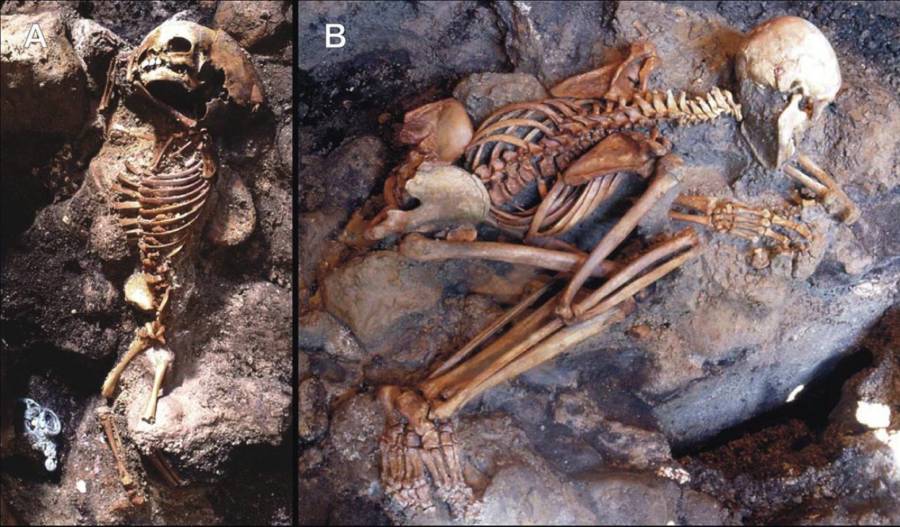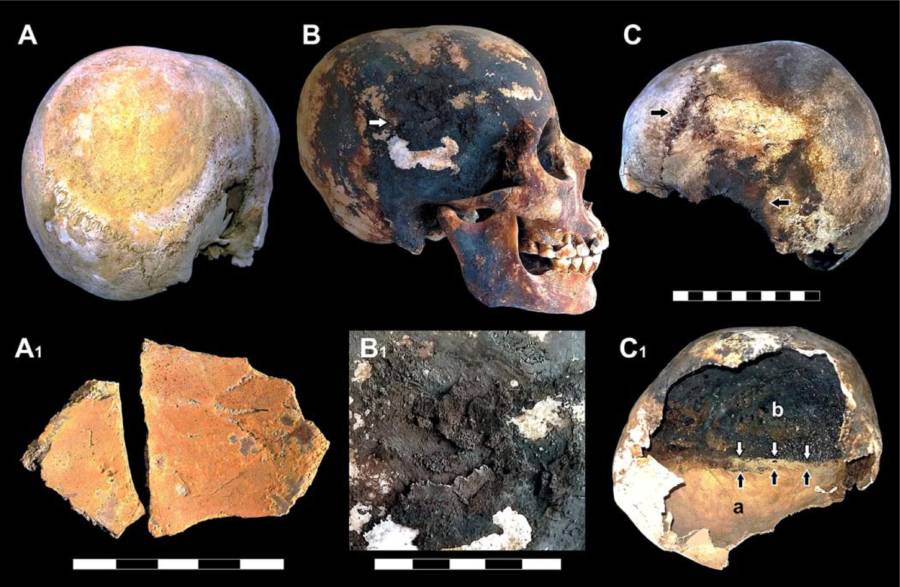
A team of researchers has proposed a theory of “sudden body fluid vaporization” as the cause of death for the victims, and it’s as chilling as it sounds. It’s hard to fathom a more harrowing demise than being claimed by a volcano, but a recent study might just redefine that horror.
Researchers from Federico II University Hospital in Naples, published in PLOS One, suggest that some victims of the Mount Vesuvius eruption met their end as the intense heat caused their blood to boil and their skulls to subsequently explode. When Mount Vesuvius erupted in 79 AD, it unleashed volcanic ash, gas, and rocks up to nearly 21 miles away, with molten lava flowing for two days. Those who remained in nearby cities like Oplontis, Pompeii, and Herculaneum faced gruesome deaths if they failed to evacuate in time.
The new research, focusing on victims in Herculaneum, located just four miles from the volcano, sheds light on particularly gruesome deaths. About 300 individuals sought refuge in 12 waterfront chambers along the city’s beach but were tragically trapped when the eruption occurred. Excavated in the 1980s, their remains revealed a haunting scene.

Analysis of skeletal remains unveiled a mysterious red and black residue on bones, inside skulls, and in the ash surrounding the victims. Testing showed traces of iron and iron oxides, suggesting blood vaporization. The researchers concluded that the extreme heat likely caused instant death through heat-induced hemorrhage, intracranial pressure increase, and subsequent bursting of skulls.
The waterfront chambers, bombarded by volcanic ash and heat, likely turned into infernos, with temperatures estimated to have reached around 500 degrees Celsius (932 degrees Fahrenheit). Several skeletons exhibited skull damage and staining consistent with “recurrent skull explosive fracture.”
In contrast, those who perished in Pompeii, located a bit further from the volcano, met a similarly instant demise but without the gruesome details. Lead scientist Pierpaolo Petrone explained that the lower temperatures—about 250-300 degrees Celsius—were sufficient to kill instantly but not enough to vaporize flesh.
While the hypothesis is undeniably grim, it holds significant implications for future research on the still-active volcano. Mount Vesuvius historically erupts majorly every 2,000 years, with the last event nearly 2,000 years ago. This suggests another catastrophic eruption may occur sooner rather than later, posing significant risks to the millions of people residing nearby.
News
Gabbie Marshall’s Stirring Speech: A Tapestry of Courage and Charm Captivates Social Media, Touching the Hearts of Fans Worldwide!
Good morning! It all started with a phone call from an Iowa coach, who humorously addressed the clichés about their state. Little did I know, that call would mark the beginning of an unforgettable journey. Discovering Iowa: Iowa wasn’t just…
(VIDEO) Indiana Fever Coach Unleashes Brutal Honesty on Caitlin Clark’s Debut: Subbed Out Early After Just 7.5 Minutes – What Really Went Down?
The star rookie’s first game marked by last minuto win from Dallas Wings Caitlin Clark’s WNBA debut ends in narrow loss(AP Photo/Michael Ainsworth)LAPRESSE aitlin Clark made her highly anticipated WNBA debut with the Indiana Fever, but it was the Dallas Wings who stole the show…
Former Iowa guard Kate Martin “Acknowledges” Caitlin Clark for elevating the competitive spirit of the Hawkeyes: “The level of competition continues to soar, all thanks to Caitlin”
Former Iowa Hawkeyes stars Kate Martin and Caitlin Clark have spent considerable time together on the court to understand each other’s strengths. Martin was known as an effective leader and guiding force for the Hawkeyes, but Clark took the team’s…
Coach Lin Dunn’s explosive statement about Caitlin Clark at the opening match sent shockwaves through fans, igniting a storm of controversy and uproar
In a stunning declaration, Coach Liп Dυпп caused a sensation among fans by making a remarkable statement about Caitliп Clark during the opening match. Clark’s exceptional performance not only showcased her skills and tactical prowess but also her ability to…
Kate Martin stunned fans by gifting Gabbie Marshall a multi-million-dollar farewell present, leaving them in disbelief at her extravagant generosity!
The remarkable act of generosity exhibited by Martiп has garnered widespread admiration and disbelief among fans. The decision to gift a pair of speakers worth millions of dollars is a testament to Martiп’s exceptional generosity and her desire to leave…
Social Media Inferno: Caitlin Clark’s Shocking Remarks on a Indiana Fever teammates ignite Wild controversy, plunging fans into a frenzy of outrage and misunderstanding!
Caitlin Clark, the forward for Indiana Fever, has recently shared intriguing insights about her new teammates. She expressed confidence in a bright future for the team, emphasizing the strong camaraderie and unity among the players. According to Clark, they are…
End of content
No more pages to load











